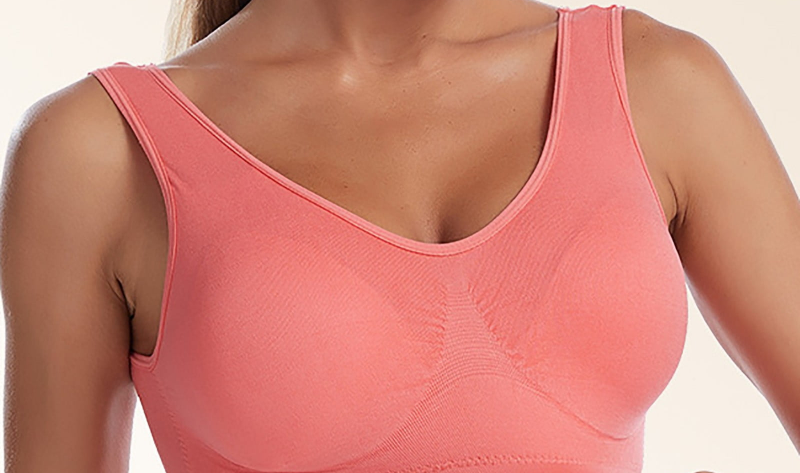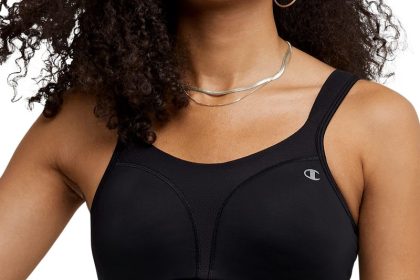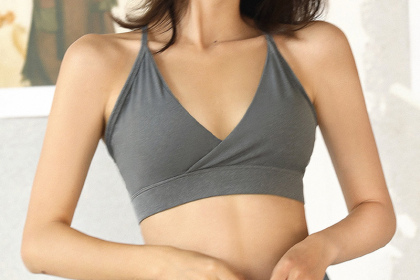When it comes to women’s fitness apparel, choosing the right material for sports bras is crucial. A well-fitted sports bra provides essential support during workouts, whether running, practicing yoga, or participating in high-intensity activities. However, the material of the sports bra is equally important for comfort, breathability, and moisture management. Different fabrics can significantly impact your performance and overall experience, making it essential to understand which materials suit your specific activities and preferences. In this comprehensive guide, we will explore the different materials used in sports bras, their unique properties, benefits, and drawbacks, and how to choose the best fabric for your individual needs. By the end, you will be well-equipped to make informed decisions when selecting a sports bra that complements your active lifestyle.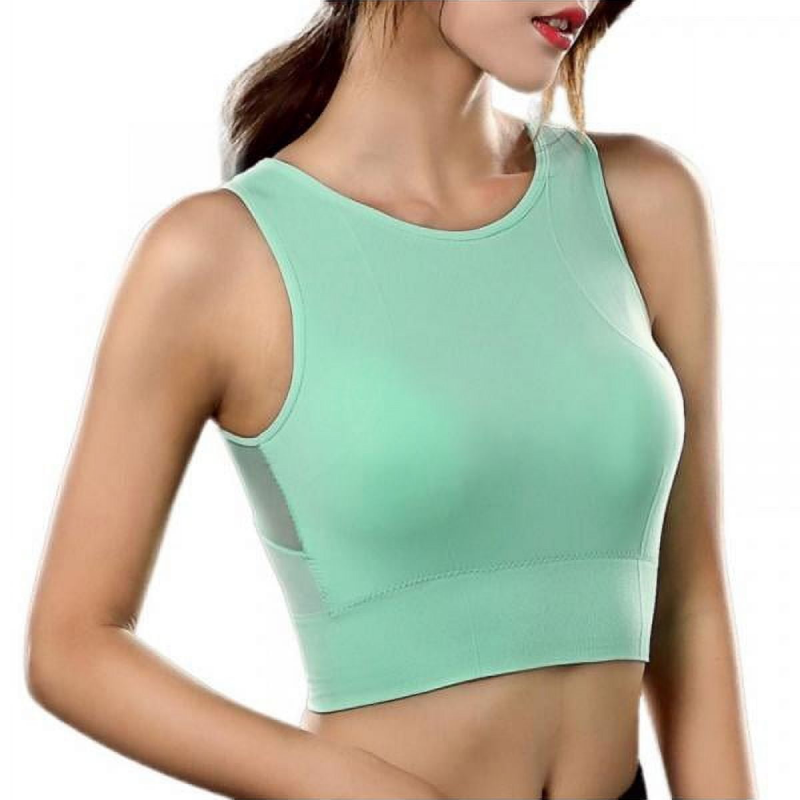
The Importance of Material in Sports Bras
Understanding the importance of material in sports bras can significantly influence your workout experience. The right fabric impacts comfort, durability, and functionality, helping you perform at your best during any physical activity.
1. Comfort and Fit
Comfort ranks high on the list of priorities when choosing sports bras. The fabric directly affects how the bra feels against your skin during movement. Soft, stretchy materials that allow for freedom of movement can enhance your comfort level and minimize chafing or irritation.
2. Breathability
Breathability becomes crucial, especially during intense workouts. Materials that wick moisture away from the body help regulate temperature, keeping you cool and dry as you sweat. Choosing breathable fabrics can eliminate discomfort and allow you to focus on your performance.
3. Support
The material also contributes to support levels provided by a sports bra. Some fabrics have inherent stretch or stiffness that can enhance support for larger bust sizes. Evaluating support features based on certain materials can help align your bra choice with your workout style.
4. Durability
When investing in sports bras, considering the lifespan of the materials is essential. High-quality fabrics can withstand rigorous workouts and frequent washing, ensuring longevity in your activewear collection.
Common Materials Used in Sports Bras
A variety of materials are commonly used in sports bras, each offering unique characteristics and benefits. Understanding these materials will help you make the right choice for your needs.
1. Polyester
Polyester is one of the most common materials used in sports bras. It is durable, lightweight, and moisture-wicking, making it a favorite among athletes. polyester’s quick-drying properties ensure that sweat moisture is drawn away from the skin to the fabric’s surface for evaporation.
Benefits of Polyester
- Moisture Management: Excellent at wicking moisture, keeping you dry during workouts.
- Durability: withstands wear and tear, ensuring longevity.
- Color Retention: Holds dyes well, maintaining vibrancy even after numerous washes.
2. Nylon
Nylon is another popular fabric known for its excellent stretch and softness. It provides a comfortable fit and is often blended with other materials to enhance durability and moisture management.
Advantages of Nylon
- Smooth Texture: Feels comfortable against the skin, reducing the chance of irritation.
- Flexible Fit: Offers superior stretch for freedom of movement during exercises.
- Resistance to Shrinking: Maintains its shape over time and wash cycles.
3. Spandex (Lycra)
Spandex, also commonly referred to as Lycra, is a synthetic fabric known for its exceptional stretch. While often blended with other fibers, it adds elasticity and shape retention, allowing for a snug yet comfortable fit.
Key Features of Spandex
- High Elasticity: Provides a snug fit that moves with your body.
- Shape Retention: Keeps its shape even after multiple uses.
- Breathable Blends: Combines well with other materials for enhanced comfort and performance.
4. Cotton
While cotton is less commonly used in high-performance sports bras, some people prefer its natural fiber properties for comfort, especially in low-impact activities. Cotton tends to be soft and breathable, making it comfortable for casual wear.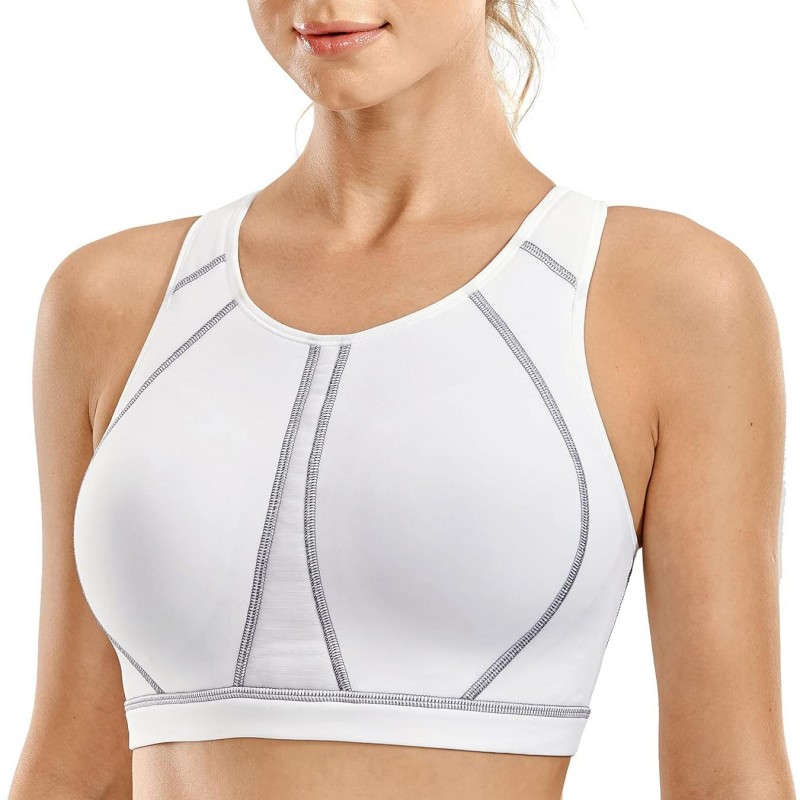
Pros and Cons of Cotton
- Soft Feel: Offers comfort, especially for leisurely activities.
- Natural Material: Generally hypoallergenic, making it suitable for sensitive skin.
- Limited Moisture Control: Cannot wick moisture effectively, making it less ideal for high-intensity workouts.
Features to Look for When Choosing a Sports Bra
When selecting a sports bra, several features beyond material come into play. Understanding these features can help ensure that you make an informed choice for your active lifestyle.
1. Support Level
Consider your activity level and breast size when selecting a sports bra. There are three main support levels:
- Low Support: Ideal for activities like yoga or walking, featuring minimal padding and coverage.
- Medium Support: Suitable for cycling or weight training, these bras offer moderate support with added cushioning.
- High Support: Designed for high-impact activities like running, they often include underwire and more structured designs.
2. Construction Type
The construction method of a sports bra affects fit and comfort. Common construction types include:
- Unlined Bra: Offers minimal padding and a lightweight feel, perfect for breathability and comfort.
- Padded Bra: Provides extra cushioning for added comfort and shape, ideal for higher support levels.
- Underwired Bra: Offers maximum support, especially beneficial for larger bust sizes during high-impact activities.
3. Straps and Adjustability
Strap design can significantly influence comfort and support. Adjustable straps allow customization to fit different body shapes, while racerback designs can offer better support and an unrestricted range of motion.
4. Seam Design
Consider whether the bra has flat seams or traditional seams. Flat seams improve comfort by minimizing chafing; this is particularly important during high-intensity workouts or longer rides.
5. Closure Type
Various closure types exist, including pullover, hook-and-eye, or front closures. Each type has distinct benefits:
- Pullover: Provides a seamless look, but be mindful of fit.
- Hook-and-Eye: Offers adjustability, making it easier to wear and remove.
- Front Closure: Eases wearability, especially for those with reduced mobility.
Popular Brands for Women’s Cycling Gloves
Recognizing established brands known for quality helps streamline your selection process when picking a sports bra. Below are popular brands respected in the fitness industry:
1. Lululemon
Lululemon is renowned for its high-quality athletic wear, including women’s cycling bras. Their products combine comfort, style, and functionality, making them suitable for various activities.
2. Nike
Nike’s sports bras are designed with innovative materials that provide breathability and support. The brand often includes cutting-edge technology to optimize performance for athletes.
3. Under Armour
Under Armour focuses on performance apparel specifically designed for durability and comfort during intense workouts. Their sports bras often feature moisture-wicking properties for enhanced comfort.
4. Champion
Known for providing affordable athletic wear without sacrificing quality, Champion offers a range of sports bras that cater to various support levels and styles, ideal for fitness enthusiasts.
5. Adidas
Adidas creates versatile sports bras that combine style with functionality, often incorporating both comfort and support into their designs suitable for cycling and other activities.
Maintenance and Care Tips for Sports Bras
Ensuring the longevity and performance of your sports bras involves proper care. Here are some maintenance tips to keep your women’s cycling bras in top condition:
1. Regular Washing
Follow the manufacturer’s washing instructions to help maintain fabric integrity. Most sports bras are machine washable; however, it’s advisable to use a gentle cycle with cold water to prevent wear.
2. Use a Lingerie Bag
When washing your bras, consider placing them inside a lingerie bag, which can provide extra protection against snags and tangles during the wash cycle.
3. Avoid Fabric Softeners
Avoid fabric softeners, as they can leave a residue that affects moisture-wicking abilities, which are crucial for performance in sports bras.
4. Dry Properly
Air dry your sports bras instead of putting them in the dryer. Hanging them to dry helps retain their shape and elasticity while avoiding unnecessary damage from heat.
5. Inspect Regularly
Check your sports bras for signs of wear and tear regularly. Inspect straps, seams, and padding—if you notice any damage or degradation, consider replacing them to maintain optimal support.
Common Questions About Women’s Cycling Gloves
If you’re considering women’s cycling gloves, you may have some questions. Here we address some frequently asked questions related to the topic.
1. How do I determine my size for cycling gloves?
To find the right size, measure the circumference of your hand just below the knuckles, excluding the thumb. Use a sizing chart provided by the glove manufacturer to select your size accordingly.
2. Can I wear cycling gloves year-round?
Yes, many gloves come in various thicknesses, allowing you to find appropriate options for winter, summer, or transitional seasons. Consider breathable gloves for warm conditions and insulated, waterproof options for colder weather.
3. How often should I replace my cycling gloves?
The lifespan of cycling gloves varies based on usage and care. As a general rule, replace them every 6 to 12 months or sooner if you notice significant wear or diminished grip.
4. What are the best gloves for long-distance cycling?
For long-distance cycling, consider padded gloves with moisture-wicking properties to help reduce fatigue and provide comfort throughout your ride. Full-finger or half-finger gloves can be suitable depending on the season.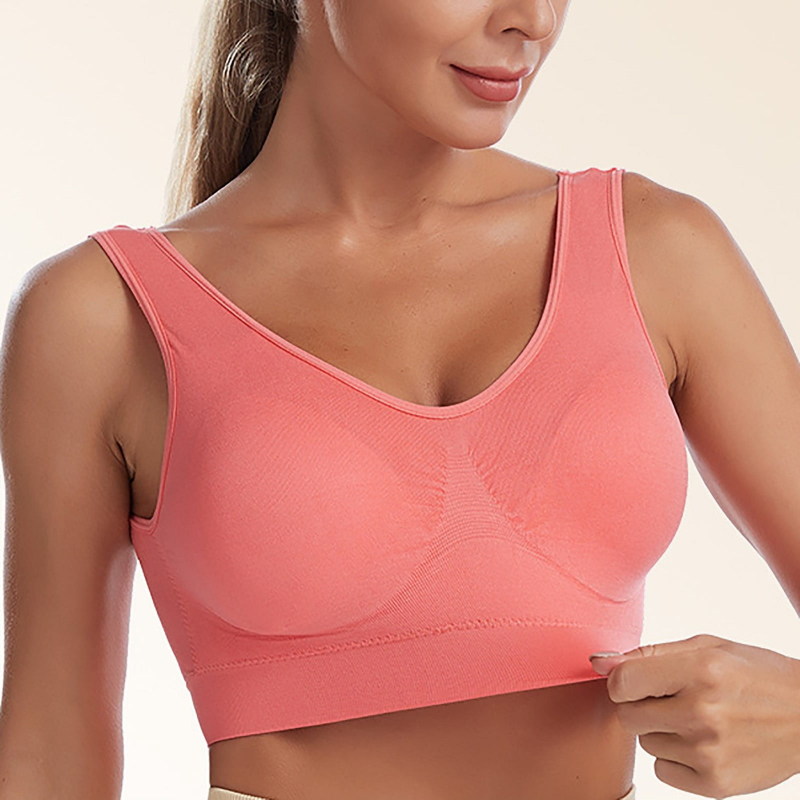
Conclusion
Choosing the right women’s cycling gloves is essential for enhancing comfort, performance, and safety during your rides. With a variety of styles, materials, and features available, it’s crucial to consider your specific cycling needs and preferences. Whether you’re looking for insulation for winter rides, breathability for summer cycling, or added support for long-distance rides, the right sports bra can make all the difference.
Additionally, maintaining your cycling gloves through proper cleaning and care ensures they remain effective and comfortable over time. By being mindful of sizing, materials, and the intended use of your gloves, you can confidently select a pair that elevates your cycling experience. Embrace the freedom and joy that cycling offers, knowing you’re equipped with the best functional and stylish gear to support your journey!
